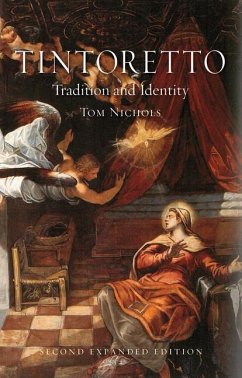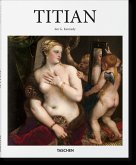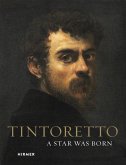Jacopo Tintoretto (1518-94) is an ambiguous figure in the history of art. His radically unorthodox paintings are not readily classifiable, and although he was Venetian by birth, his claim to be truly a member of the Venetian School has often been doubted. As a youth, he was rejected early on from the workshop of the great Titian, who was accepted then, as now, as the quintessential Venetian painter. In the long career that nonetheless followed, Tintoretto abandoned the humanist narratives and sensual colour values typical of Titians work in favour of a renewed concentration on core Christian subjects. He painted these in a chiaroscuro-based style using a rough and abbreviated technique.
Writers such as Giorgio Vasari and John Ruskin interpreted Tintorettos opposition to the artistic practice of his time as an aspect of personal eccentricity or spirituality. Jean-Paul Sartre saw the painter as the son of an artisan . . . attacking the patrician aesthetics of fixity and being. These oversimplified and a-historical interpretations mean that Tom Nicholss re-assessment of Tintorettos place in the history of art is long overdue. Nichols shows how the artist created a new manner of painting, which for all its originality and sophistication made its first appeal to the shared emotions of the widest-possible viewing audience.
This generously illustrated book, now available in a compact pocket format, and featuring 16 added illustrations and a new Afterword by the author, charts the artists life and work in the context of Venetian art and the culture of the Cinquecento. The book deals extensively with Tintorettos greatest works, including the paintings at the Scuola di San Rocco in Venice.
Writers such as Giorgio Vasari and John Ruskin interpreted Tintorettos opposition to the artistic practice of his time as an aspect of personal eccentricity or spirituality. Jean-Paul Sartre saw the painter as the son of an artisan . . . attacking the patrician aesthetics of fixity and being. These oversimplified and a-historical interpretations mean that Tom Nicholss re-assessment of Tintorettos place in the history of art is long overdue. Nichols shows how the artist created a new manner of painting, which for all its originality and sophistication made its first appeal to the shared emotions of the widest-possible viewing audience.
This generously illustrated book, now available in a compact pocket format, and featuring 16 added illustrations and a new Afterword by the author, charts the artists life and work in the context of Venetian art and the culture of the Cinquecento. The book deals extensively with Tintorettos greatest works, including the paintings at the Scuola di San Rocco in Venice.








